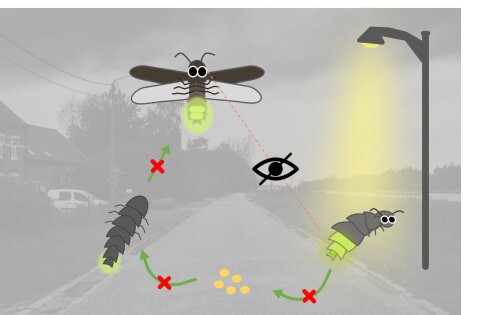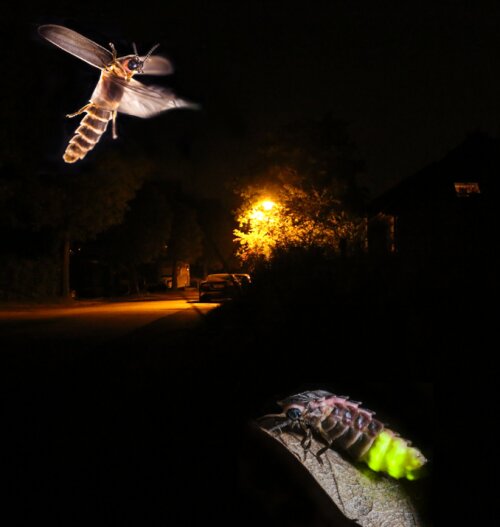Behavioural responses of bioluminescent fireflies to artificial light at night
Nocturnal light pollution affects the natural light environment and day-night cycle, impacting many taxa. The charismatic beetles from the Lampyridae family, commonly known as fireflies and glow-worms, are particularly vulnerable to interfering light from the environment, due to their nocturnal lifestyle and their use of bioluminescent light signals. Fireflies are mostly known for their bioluminescent mating displays. In a recent review paper, Mira Van den Broeck and Raphaël De Cock (Global Change Ecology Centre, Research Team Evolutionary Ecology), together with their American colleagues, brought together all scientific evidence of the impact of light pollution on these species.
The Lampyridae family holds more than 2000 members that can be categorised in four different courtship signalling systems, all of which are affected by artificial light at night (ALAN). Light pollution lowers the mating success by preventing flying males to find the continuously glowing flightless females, especially under bright light.
In species where males and females engage in flashing courtship displays, ALAN disrupts these dialogs. In Asian firefly species where males congregate in a tree and synchronize their courtship flashes, even camera flashes of tourists have disturbing effects on these displays. Even in the last category in which the day-active adults do not glow and rely on pheromones to localize partners, ALAN modifies the natural day-night cycles, potentially impacting timekeeping mechanisms that regulate daily and seasonal rhythms of activity.
There is clearly still some action needed to lower the effect of light pollution on these charismatic species. But it is also specifically this charisma that could save them: fireflies could serve as an ambassador species to raise awareness of the detrimental effects of light pollution on nocturnal wildlife.

ALAN disturbs mating courtships and lowers the mating success of fireflies and glow-worms.
